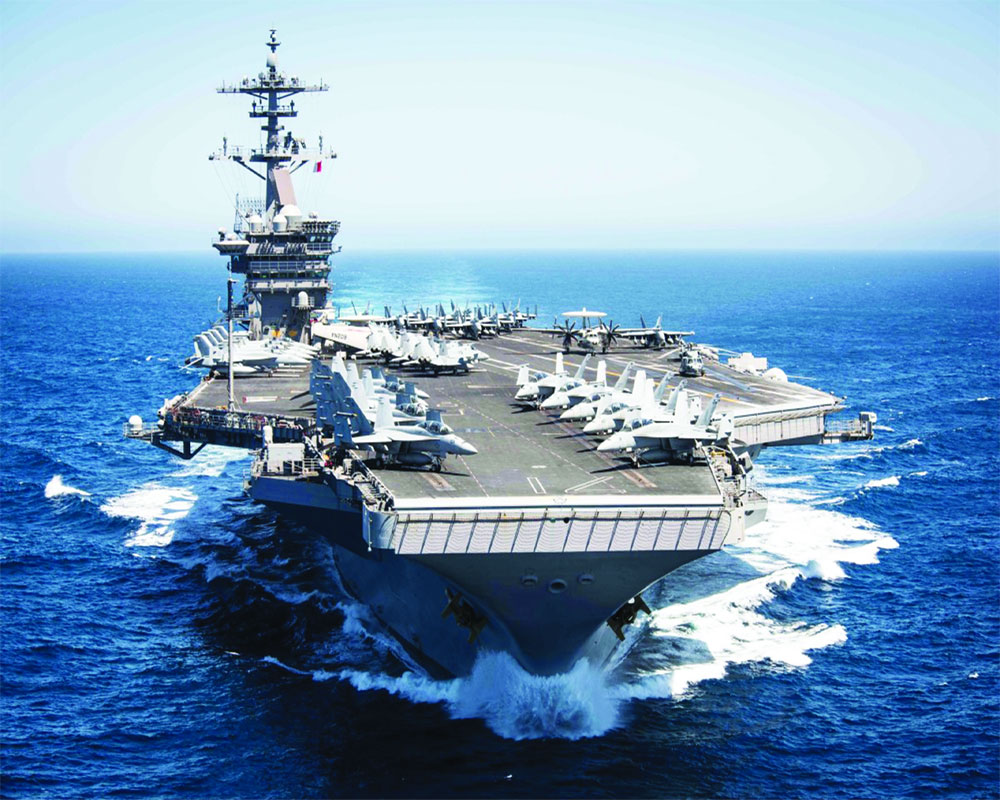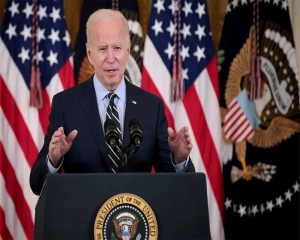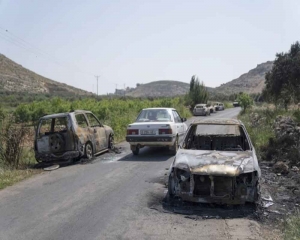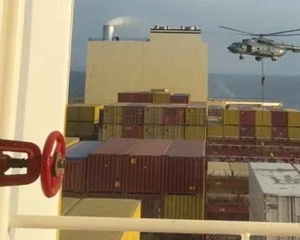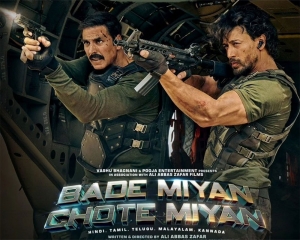Even if the initial downplaying and non-evacuation of the Coronavirus-ridden USS Theodore Roosevelt was a practical necessity, the US naval leadership did not handle it properly
A cruel irony plays out as the powerful Nimitz-class nuclear-powered aircraft carrier, USS Theodore Roosevelt, succumbs precariously to what the US President had cuttingly called the “Chinese virus” or Coronavirus. The irony gets magnified with the ship’s call sign, “Rough Rider” and its motto, Qui Plantavit Curabit, or, “He, who has planted, will preserve.” With more than 100 sailors infected with the Novel Coronavirus, the mighty battle platform has been rendered ineffective like never before. The gargantuan warship with over 1,17,000 tonne displacement capacity to carry 90 aircraft and 5,000 crew members had been leading a China-centric strike group encompassing an air wing, cruiser and six destroyers before it figuratively ran aground with the first COVID-19 case being reported on any US naval vessel deployed overseas. The sheer apathy and indecisions surrounding the crisis in the US Navy are obvious from the fact that the first reported case came on March 24 and the request to contain the predicament went unheeded till it led to a spiralling of infected cases aboard. An embarrassing SOS followed from the Captain of the battleship.
Captain Brett Crozier wrote a desperate and blunt four-page letter to the naval leadership asking for “decisive action” and warned that the continuing dilly-dallying was “unacceptable.” His moving words, “We are not at war. Sailors do not need to die. If we do not act now, we are failing to properly take care of our most trusted asset — our sailors”, hit at the soul of the seafaring nation with a proud naval tradition. The US’s legendary politician, the former Secretary of the Navy, Frank Knox, had famously said, “No matter what happens, the US Navy is not going to be caught napping.”
Seemingly, it was caught napping in this incident as the optics were almost similar to the Japanese civilian cruise liner, Diamond Princess. Confusion led to the onboard quarantining of the ship with 712 out of the 3,711 passengers and crew infected with Coronavirus. Inaction on the part of the US Navy in responding to the initial request for containment measures onboard the USS Theodore Roosevelt led to a similar multiplication of infection. The $10 billion platform has now become a breeding ground for Coronavirus.
Living conditions on these platforms are extremely constrained to say the least. Sailors are placed cheek-by-jowl across a labyrinth of decks lined by steep ladder-like stairs and very narrow corridors. Armed to the teeth, the free space available is at a super-premium with up to 60 sailors sharing a sleeping compartment that is in bunk or rack formation, crammed together in stacks of three. All 60 of them could be sharing one bathroom with a very sparse common area. Workplaces are similarly constricted. The space to maintain the prescribed social distancing or to have proper decontamination is not possible without full evacuation.
However, evacuation has been the bone of contention with the Captain suggesting a residual force of 10 per cent or 500 members to stay on board to perform sustenance duties; whereas the Chief of Naval operations has insisted on 1,000 sailors in order to maintain the safety and security of the ship.
At stake is the nuclear power plant, four squadrons of Boeing F-18 fighter aircraft, one squadron of Growler electronic warfare aircraft, two squadrons of Seahawk multi-mission helicopters, one squadron of Grumman E-2 Hawkeye early warning aircraft and another squadron of Greyhound cargo aircraft. Besides, the aircraft carrier’s own munitions, including three Phalanx CIWS, two RIM-7 Sea Sparrow weapons systems and two RIM-116 infrared surface-to-air missiles. Securing the operational worthiness of the ship has inadvertently counter-posited the same vis-à-vis the concern for the safety of the sailors onboard. While the US naval top brass is rejecting allegations of either a lackadaisical attitude or failure to take care of its sailors, this incident has highlighted the overall lack of preparedness and sensitivity towards such exigencies — be it in the civilian or in the military realm.
However, what will haunt the hallowed institution of the US armed forces much after the Coronavirus crisis has settled is not so much the apparent defencelessness from a
medical or an infrastructural perspective, as much as the reaction of its senior leadership towards the soldiers at the forefront.
Captain Brett Crozier alluded to this leadership aspect when he stated that keeping the crew on the ship was “an unnecessary risk and breaks faith with those sailors entrusted to our care.” Equally, the leak of the letter to the Press has also diminished the principle of good order, restraint and discipline that behoves a combat leader, whatever the circumstances.
Even a direct letter to the ostensible Commander-in-Chief, as opposed to the Press, would have been construed to be a lesser dereliction of the institutional traditions. This incident will trigger a debate on the sacred covenant between the soldier and service, which always prides that they “leave no men behind.” Sometimes, the practicality of the situation and the cruel principle of “larger good” lead to an unfortunate compromise as it happened in the US’ decision to drop atomic bombs over Hiroshima and Nagasaki. This, knowing it fully well that occupied American prisoners-of-war (POWs) were held up in these locations. Even if the initial downplaying and non-evacuation of the Coronavirus ridden USS Theodore Roosevelt was a practical necessity, it was not handled with the required concern, alacrity and reassurance from the naval leadership.
Naval leaderships are given to the very finest and noblest traditions that always put the honour of the nation and the people under command above the interest of the leaders themselves. The saga of Indian Navy’s captain, MN Mulla, who chose to go down with his ship in the India-Pakistan war, is the sort of DNA that professional navies thrive on.
Therefore, the US Navy will be forced to navel-gaze on its own handling of the USS Theodore Roosevelt issue as the most visible, intimidating and deadly “five acres of mobile US land.” Diplomacy cannot sink to such lows.
(The writer, a military veteran, is a former Lt Governor of Andaman & Nicobar Islands)













